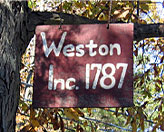

The Future Of AIDS Prevention in Connecticut
|
Prevention Plan for Intravenous Drug Users (IDU) |
|
|
Although all Needle Exchange Programs differ in their exact composition, the basic principles on which such strategies are based remains the same. In nearly all cases, Public Health officials are relying on the assumption that “drug users can respond to education and resources, and sustain long-term behavioral change within their communities” (4). Indeed, an analysis of the Tacoma Syringe Exchange Program in Washington revealed that “SEP participants maintained epidemiologically stable levels of risk behavior under adverse conditions” (4), suggesting that the program was, overall, effective. Although the NEP planned for Bridgeport is not an exact replica of such projects as the Tacoma SEP, it is based on an amalgamation of such models, including “Late Night Breakfast Buffet” in San Francisco (18) and the New Haven Community Health Care Van (CHCV). Like the CHCV, the van utilized in the Bridgeport program would be a “36 foot mobile health care unit that is designed to provide acute care and linkages to available community medical treatment, drug treatment, and social services” (17). However, in addition to “medical and HIV services, a case manager, a drug treatment counselor, and an outreach worker” (17), the Bridgeport NEP van would provide education about safer injection, proper syringe disposal, referrals to drug treatment, condoms, clean needles, needle cleaning machines, and the necessary tools for oral HIV testing (in order to accelerate results and increase patients’ return) (21). Furthermore, all transactions would be conducted in a decidedly nonjudgmental manner and would include donated medication in order to provide for uninsured clients, especially undocumented ones (17).
|
Mobile Outreach Van in Wilmington, Delaware (28) |
 |
The NEP van will operate 5 days a week, much like the CHCV (17), and will visit 4 locations within the city. Between 9pm and 10pm the van will be located on Grant Street. It will then move to lower Fairfield Ave. near State Street and remain there from 10pm to 11pm. Finally, between 1am and 5 am the van will move between Stratford Ave. in East Bridgeport and State Street near Iranistan Street, as modeled after the “Late Night Breakfast Buffet” program (18). These four locations were chosen for their proximity to: downtown Bridgeport (a more urban section of the city), the areas most affected by drug arrests (24), and the known Narcotics Anonymous meetings and drug rehabilitation clinics. Throughout the operation of the van, 4 employees will work in the various positions of case manager, drug treatment counselor, outreach worker, and medical personal (who can assist with HIV and STI testing). Although these positions will be filled, primarily, by professionals, the possibility of volunteers from nearby colleges, including Yale, Fairfield University, UConn, Connecticut College, and Wesleyan, remains a distinct possibility. Finally, prior to operation, the Bridgeport van staff will begin advertising in Narcotics Anonymous meeting places (such as the Golden Hill Methodist Church on 210 Elm St.), in drug rehabilitation clinics (including Alpha House on 425 Grant Street and Helping Hand Center of Bridgeport on 1124 Iranistan Ave.), and in the emergency and waiting rooms of Norwalk and Bridgeport Hospital.
|